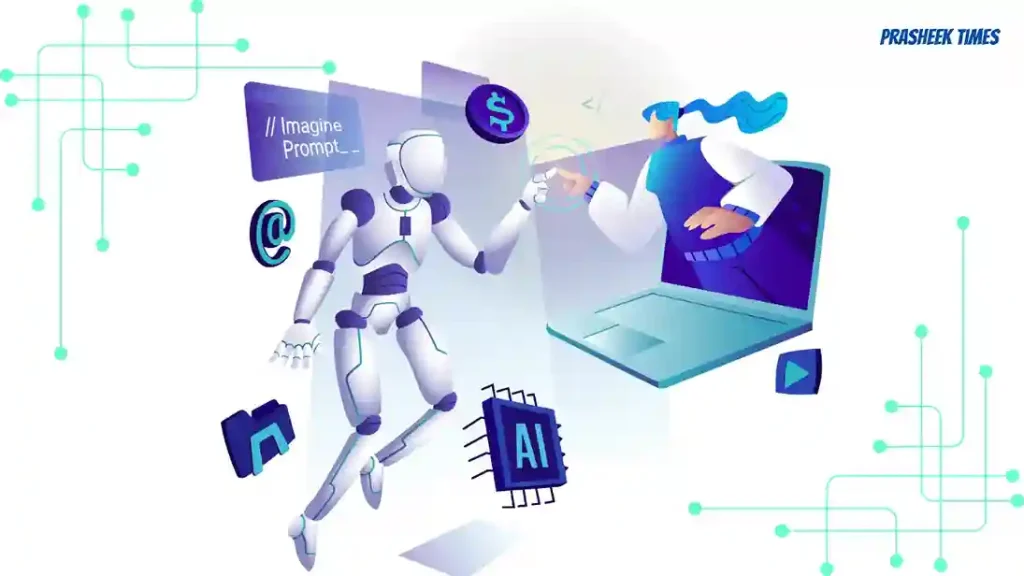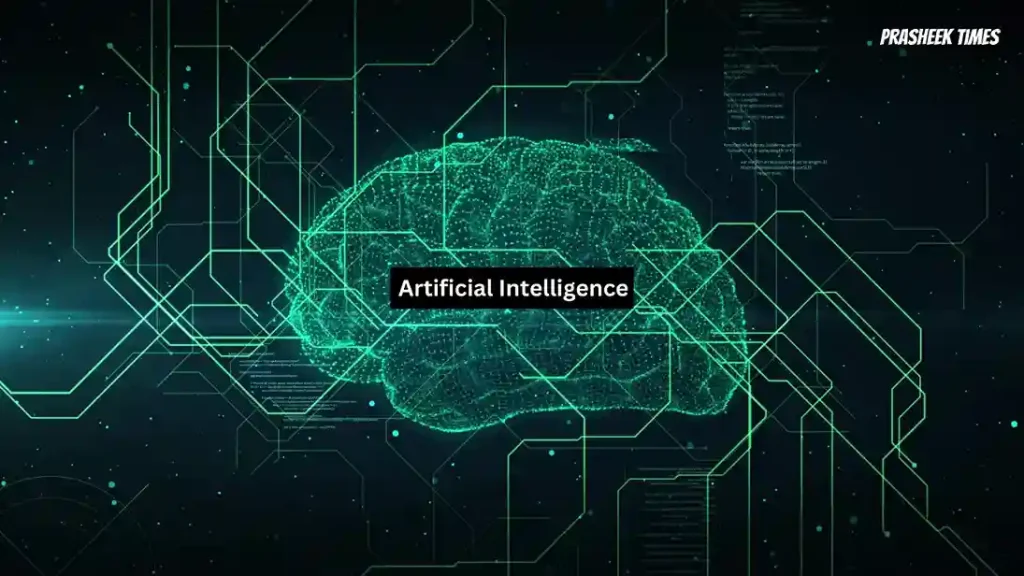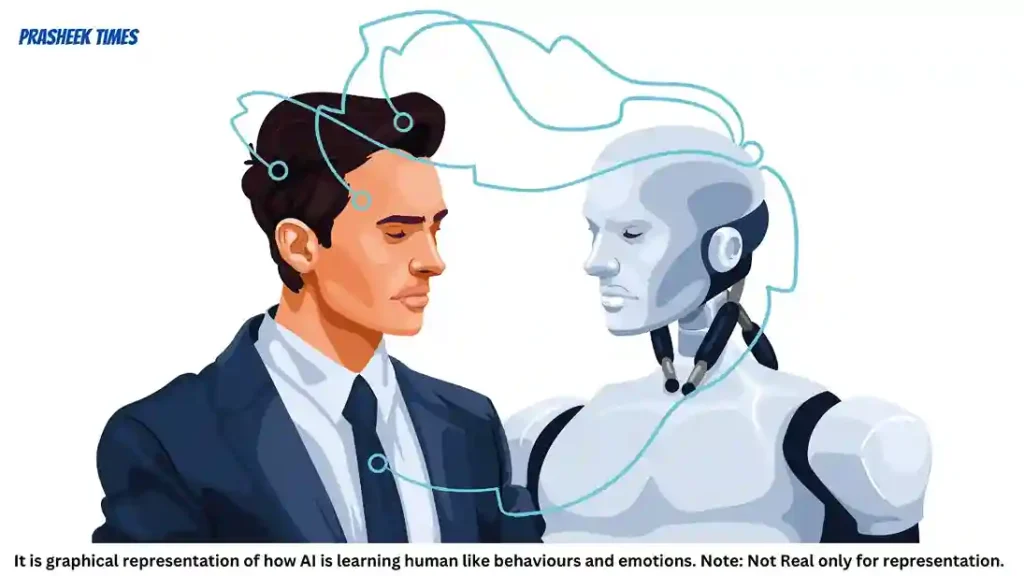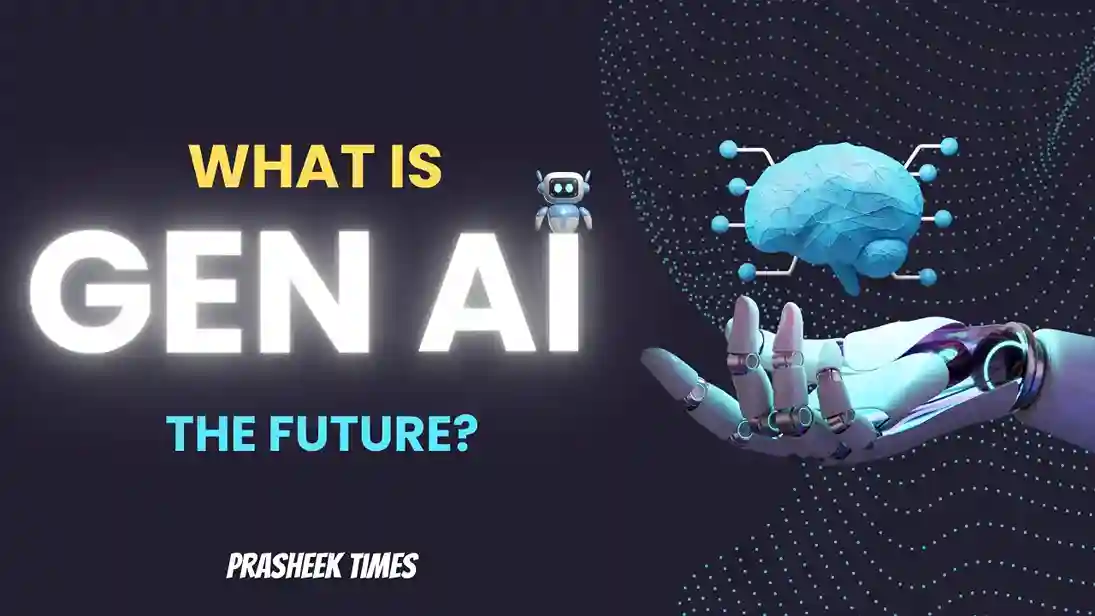Towards Gen AI or not is no longer a question for us. Rapidly World-wide with Indian IT firms are proactively preparing their workforce (employees) to embrace the power and to get super enhance from Gen AI, which is completely reshaping and remodeling the whole ways of business and technology.
Let’s try to dive deep and try to know that what is Gen AI, How Gen AI works, and why it is that crucial for corporates to make compulsion to employees to be upscaled by it. and to work with the new booming technology that is Gen AI.
What is AI:
AI means Artificial Intelligence, it is a broadest sense in technology, where machines exhibit intelligence. Our human or natural intelligence is totally opposed in these terms, Ai is a field of research in CS (Computer Science) that studies as well as develops that enables machine software’s to perceive their environment and uses their whole learning and intelligence which is developer to take any action on the direction of prompter. Such machines or software’s are called AIs.
Artificial Intelligence this is the plain/pure form of AI that is Normal or general AI also known as Traditional AI.
AI technologies include ML (machine learning), where computers can learn and adapt to new data without human intervention (after a certain training period), DL (deep learning), which is a subset of machine learning with networks capable of learning unsupervised from unstructured data, and natural language processing, which is the ability of a computer program to understand human language as it is spoken and written. Where it gives an ability to mimic likewise a human but with a very informative and trained brain or we can say a Superhuman.
What is Gen AI:
Gen AI means Generative AI is an upgraded version of normal or traditional AI where it just not limits only till the study and of intelligence but also in this stage AI gets boost up powers like to generate. As name indicated Gen AI means generating text, images, videos, or other data using generative models.
Basically, with some inputs of information this GEN AI creates/generates various kind of information in types of images, videos, texts, data, etc. using only its intelligence that will be very unique every time whenever the information is asked which is in response of prompts.

Generative AI models learn the patterns and structure of their input training data and then generate new data that has similar characteristics in their databases.
Improvements in transformer based deep neural networks. Those are same neural transmitters of information as neural system works in a Living being’s brain, Neural networking is based on small, detailed network system which transfers and processes the information everywhere and which stores it. This uses particularly large language models (LLMs) that enables an AI Boom of Generative AI. From early 2020s it was a lot popular and booming among common people and corporates Aswell.
These include chatbots such as ChatGPT, Copilot, Gemini and LLaMA, text-to-image artificial intelligence. Image generation systems such as Stable Diffusion, Midjourney and DALL-E, Leonardo AI, Etc., and text-to-video AI generators such as Sora. Companies such as OpenAI, Anthropic, Microsoft, Google, and Baidu as well as numerous smaller firms have developed generative AI models.
Gen AI vs AI:
| Aspect | Traditional AI | Generative AI |
| Functionality | Performs specific tasks intelligently based on predefined rules and data. | Creates new content by learning patterns from training data. |
| Examples | Voice assistants (Siri, Alexa), recommendation engines, search algorithms. | Generates text, images, music, and even code. |
| Data Usage | Labeled data with specific categories or values. | Unlabeled data, learning underlying patterns. |
| Creativity | Limited to existing rules and strategies. | Imaginative, generates original content. |
| Application Scope | Well-defined tasks within specific rules. | Explores new possibilities beyond predefined rules. |
| Use Cases | Predictive analytics, recommendation systems, rule-based decision-making. | Creative writing, art generation, content creation. |
History of artificial intelligence:
The journey of artificial intelligence (AI) shoots up during a scholarly gathering convened at Dartmouth College in 1956 and has since witnessed successive waves of progress and optimism. Since its inception, scholars within this domain have engaged in profound philosophical and ethical discourse regarding the essence of human cognition and the repercussions of fabricating entities endowed with human-like intellect. These deliberations echo the contemplations found in ancient mythologies, fictional narratives, and philosophical treatises dating back to antiquity.
The notion of mechanized art finds its roots in ancient Greek civilization, where ingenious minds such as Daedalus and Hero of Alexandria were credited with devising contraptions capable of composing text, producing auditory stimuli, and orchestrating melodic compositions. The legacy of creative automata persists across epochs, epitomized by the automaton crafted by Maillardet in the early 1800s.
The concept of Artificial Intelligence has captivated the collective imagination since the mid-20th century. Although initially confined to the realms of speculative fiction, it wasn’t until the polymath Alan Turing embarked on a quest to ascertain its viability that the concept gained scientific traction. Turing’s seminal 1950 treatise, “Computing Machinery and Intelligence,” broached fundamental queries concerning machine cognition akin to human thought processes, thereby substantially enriching the conceptual landscape of AI. Initially, progress in AI was constrained by exorbitant costs and the limited storage capacities of early computers. However, the tide turned during the 1956 Dartmouth Summer Research Project on AI, which served as a catalyst for two decades of exponential growth in the field.
Since its inception, AI has served as a conduit for artistic expression, with artists and researchers harnessing its capabilities to engender creative works. By the early 1970s, Harold Cohen had begun crafting and exhibiting generative AI artworks through AARON, a computer program he developed for generating paintings.
The utilization of Markov chains as a tool for modeling natural languages dates back to the early 20th century, following their conception by the Russian mathematician Andrey Markov. Markov’s seminal work, first published in 1906, delved into the analysis of phonetic patterns in Eugene Onegin using Markov chains. Once trained on a corpus of text, a Markov chain can function as a probabilistic text generator.
Machine learning, a burgeoning field, frequently employs statistical models, including generative models, to characterize and forecast data patterns. The late 2000s witnessed the advent of deep learning, propelling advancements in image classification, speech recognition, natural language processing, and other domains. Neural networks of this epoch predominantly functioned as discriminative models, owing to the inherent challenges associated with generative modeling.
Subsequent breakthroughs, such as the development of variational autoencoders and generative adversarial networks in 2014, heralded the advent of practical deep neural networks capable of learning generative models for complex data, including images. These pioneering deep generative models marked a departure from merely assigning class labels to images, instead, generating entire visual compositions.

The introduction of the Transformer network in 2017 revolutionized the landscape of generative models, surpassing the capabilities of traditional Long-Short Term Memory models. This culminated in the release of GPT-1, the first generative pre-trained transformer, in 2018, followed by GPT-2 in 2019, showcasing unprecedented versatility across various tasks as a foundational model.
In 2021, the unveiling of DALL-E, a transformer-based pixel generative model, alongside Midjourney and Stable Diffusion, signaled a new era characterized by the emergence of high-quality AI-generated art inspired by natural language prompts.
March 2023 witnessed the release of GPT-4, prompting discourse among researchers at Microsoft Research, who posited it as an early iteration of an artificial general intelligence (AGI) system. However, scholarly opinions remain divided, with some asserting that GPT-4 falls short of the benchmark for ‘general human intelligence’ as of 2023. Furthermore, Meta introduced ImageBind, an AI model integrating data from multiple modalities, promising more immersive generative AI experiences.
present scenarios:
The present scenarios of GEN AI are rapidly spreading in every fields as well it is playing a crucial role in the development of technology, science and in Business World.
Uses of AI in present scenarios:
Courstesy: Wikipedia
Text:
Generative AI systems trained on words or word tokens include GPT-3, LaMDA, LLaMA, BLOOM, GPT-4, Gemini and others. They are capable of natural language processing, machine translation, and natural language generation and can be used as foundation models for other tasks. Data sets include BookCorpus, Wikipedia.
Code:
In addition to natural language text, in large language models can be trained on programming language text that is coding, allowing them to generate source code for new computer programs and software’s.
Images:
Producing high-quality realistic visual art is a prominent side of generative AI. Generative AI systems trained on sets of images with text captions include Imagen, DALL-E, Midjourney, Adobe Firefly, Stable Diffusion. They are commonly used for text-to-image generation and neural style transfer.
Audio
Generative AI can also be trained extensively on audio clips to produce natural-sounding human like speech synthesis and text-to-speech capabilities, For Instance, Eleven Labs, Murf, Clip champ and many more are well trained AIs for the audio speeches.
Generative AI systems such as MusicLM and MusicGen can also be trained on the audio waveforms of recorded music along with text annotations, in order to generate new musical samples based on text descriptions such as a calming violin melody backed by a distorted guitar riff.
Music
Various realistic instrumental sounds and music are made for Gen AI easily without any real instruments but with a variety of instruments and volume For Instance: Jukebox by Open Ai, Loudly, Soundraw etc.
Many AI music generators have been created that can be generated using a text phrase, genre options, and looped libraries of bars and riffs.
Video
Generative AI trained on annotated video can generate temporally coherent, detailed and photorealistic video clips. Examples include Sora by OpenAI. Gen-1 and Gen-2 by Runway and Make-A-Video by Meta Platforms.
Many more fields like:
Software and hardware, Computer aided design, Data, Planning, Robotics, Etc.

Future OF Ai:
According to us and taking account the possibilities..
- Transformation Across Industries:
- AI is reshaping sectors like healthcare, finance, and manufacturing.
- Generative AI enables creative content generation.
- Big data combined with AI enhances decision-making.
- Business Automation and Efficiency:
- Organizations adopt AI for automation and productivity.
- Chatbots handle inquiries, freeing up human resources.
- Data privacy and regulation remain challenges.
- Climate Change and Sustainability:
- AI contributes to environmental solutions.
- Optimizing energy consumption and predicting disasters.
- Ethical Considerations and Safety:
- Ensuring fairness, transparency, and accountability.
- Balancing innovation with safety.
- The Next Decade:
- Quantum computing, neuromorphic computing, and explainable AI.
- AI integrated into education, entertainment, and daily life.
Remember, the future of AI is dynamic and full of possibilities!
Emracing AI revolution by indian companies:
- TCS mandates GenAl training for its workforce
- Its manufacturing business unit prioritises GenAl awareness.
- TCS has achieved AWS GenAl competency.
- Infosys asks that employees finish at least a course in GenAl.
- Happiest Minds aims for all employees to be GenAl-certified.
- Sonata Software targets 50% GenAl-skilled staff by year-end.
Courtesy: TOI
The debate about AI’s birth revolves around whether computers should handle tasks that require human judgment. This concern was raised by Joseph Weizenbaum, the creator of ELIZA. Recently, in April 2023, China saw a significant loss of jobs for video game illustrators due to AI-generated images. This trend spilled over into Hollywood’s labor disputes in July 2023, where AI-generated content played a role. Fran Drescher, head of the Screen Actors Guild, expressed worries about AI’s threat to creative jobs during a strike. Additionally, voice generation AI adds to concerns in the voice acting industry.
AI’s impact on jobs is a global concern, especially for marginalized groups. While AI offers benefits like efficiency and skill-building, it also raises fears of job loss and biased hiring. To use AI for a fairer society, we must address biases, ensure transparency, protect privacy, and promote diversity. Policy changes should focus on regulation, inclusive design, and personalized education to maximize benefits and minimize harm.
In Conclusion:
AI and Gen AI are the transformation of new technology, and we should adopt it for growth otherwise we and our intelligence will be backward. Use and take advantages of Artificial Intelligence properly and appropriate use is suggested. Too much use of it can create dependency on AI and that is dangerous.
